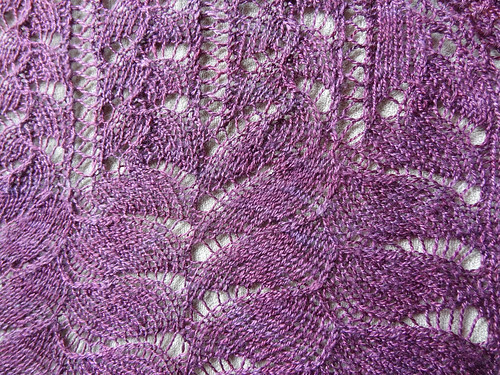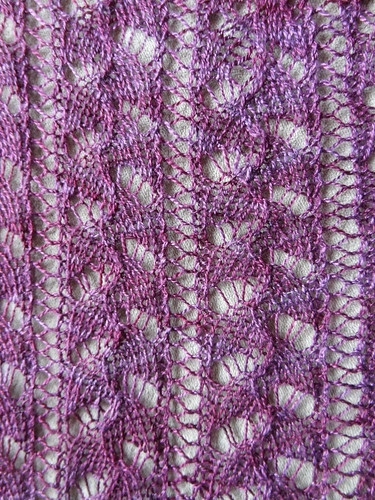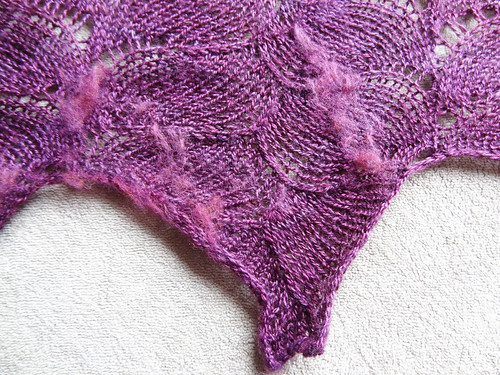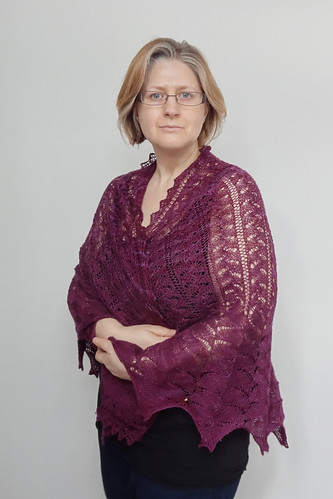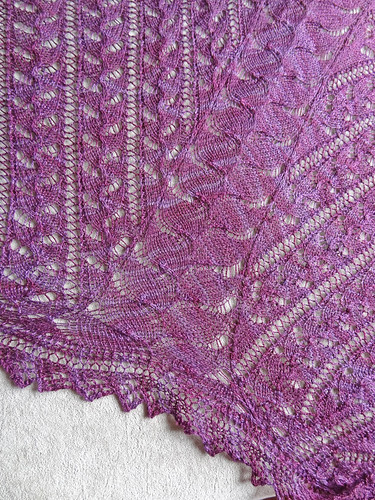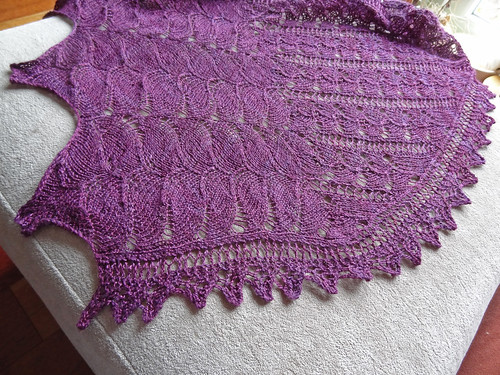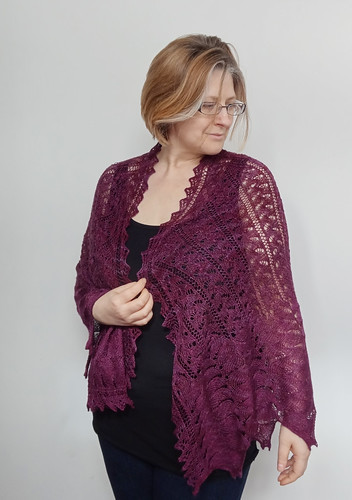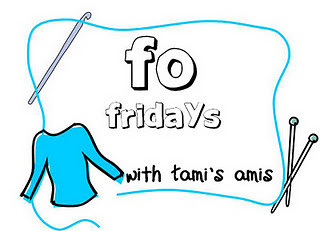Back in the deep recesses of time, back in May 2012, I cast on a shawl. It was the shawl. The one that made me first start to knit lace. The one that I aspired to completing one day. It was glorious and perfect and one day it would be mine. You may have thought this shawl had been cast into the WIP cupboard of dispair, when I didn't blog about it after 6th June 2012. The crazy thing is, my shawl was finished in September! I just didn't get the photos taken! But now I have photos that actually show the true beauty of Maplewing by Anne Hanson.
I am so proud of myself for getting this shawl finished, because it was the most difficult lace project I have ever completed. It was a knitted lace shawl, where every row has lace worked on it. I am simply unused to this style of knitting and I found it very difficult to read my knitting from the back. I have come a long way with reading my knitting, and I don't really struggle from the front anymore, but reading it from the back is another story.
This shawl was knitted from the bottom up, and as such, involved casting on about a gazillion stitches and then counting out repeats about a hundred times until I was sure I got them right. It was a nightmare, but the edge of the shawl is very pretty because of it.
Once the repeats were established and the pattern become more memorised I thought I was going to be ok. Then I got to the change over from the big pattern repeats to the second lace pattern. This was tricky to say the least. I think I knit and ripped that section of the shawl approximately three times. Each time I ripped it back I would swear and curse and throw my knitting to the foot of the sofa in disgust (please note I was never so despairing as to throw in on the floor). My main problem with this area is that there were no charts to cover the transition zone. I didn't even really have a close up photograph to look at to see what it was supposed to look like. Here is a photo for anyone interested.
I ended up drawing out the transition chart myself because I got so stuck. Once the new chart was established, it was much easier than the bigger pattern repeat further down. That may have been because it was a smaller repeat, or simply because there were many fewer stitches to knit on each row.
You can see, on the above phot,o the difference in the two skeins of yarn that I used. It may have been a pain to switch two skeins of yarn, every two rows, but it blended the variations in them much more subtly than changing skeins in the middle.
The yarn worked beautifully. Posh Yarn Gretchen Lace is a stunning base yarn of 55% BFL and 45% silk, that I thought would be pretty tough. I learned my mistake when I mis-treated my shawl at the Harrogate Show. One of the reasons this shawl was un-photographed for so long is that I hurried to get it finished to wear for Harrogate and then I ended up ruining it. I was being pushed around in a wheelchair and I thought that this shawl would be the perfect weight for the show. It was the perfect weight, it was just it was a bit too delicate for using in a wheelchair and I ended up leaning on it and the friction between my body and the chair caused major pilling during the course of the day.
I could have cried! All that work ruined. It took me months to get up the courage to tease away the pills with fingers and tiny pointy scissors. I ended up doing it because it couldn't make it any less usable. It took several days of great care and concentration to get it finished, but I did and it looks as good as new.
Since it's repair, I've worn the shawl several times and there has been no further issue with pilling. I just think I need to be very careful about wearing it when there will be lots of friction against a seat, such as in my wheelchair.
Whilst wearing this shawl I have fallen in love with, not only it's stunning lace and yarn, but also the shape. The centre panel means there is no point at the back, which means less chance of the shawl being sat on.
I also adore the way there are a second set of decreases towards the top of the shawl, to take into account the shaping of the shoulders. This means that the shawl sits in place, almost like a cape, rather than a flat piece of fabric.
I also love the border that travels all the way around the edges of the shawl that are knitted as the shawl is created, rather than knitted on later.
Whenever I wear this shawl I feel elegant, and transformed into a gorgeous butterfly. It is also surprisingly warm!
I look at this shawl and ask myself "would I ever knit this again", and I have to answer no. I don't think I could. I love this shawl and the way it makes me feel, both glamorous and accomplished, but I wouldn't knit this particular pattern again. What I would do, is knit something in this style again. In fact, what I really want to do is knit something in this faorese shape but in 4ply or thicker yarn. I love the idea of a warm and cosy shawl that sits on the shoulders and doesn't force you to sit on the point. It would be practical and wearable as an every day shawl, after the tradition and origins of this style. This dream shawl will probably pluck at my brain for a year or so before I get around to designing it, but I know I will design it at some point, and until then I shall just have to treat this gorgeous piece of silk and BFL fluff with tender loving care.
To see other finished objects, click on the button.
PS, remember there is still time to enter my birthday giveaway.



